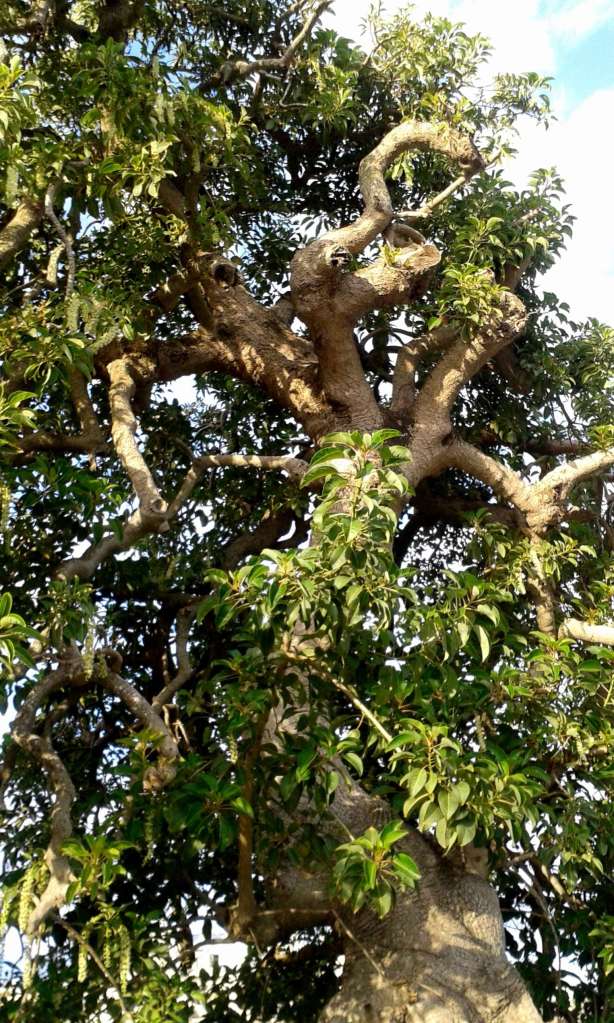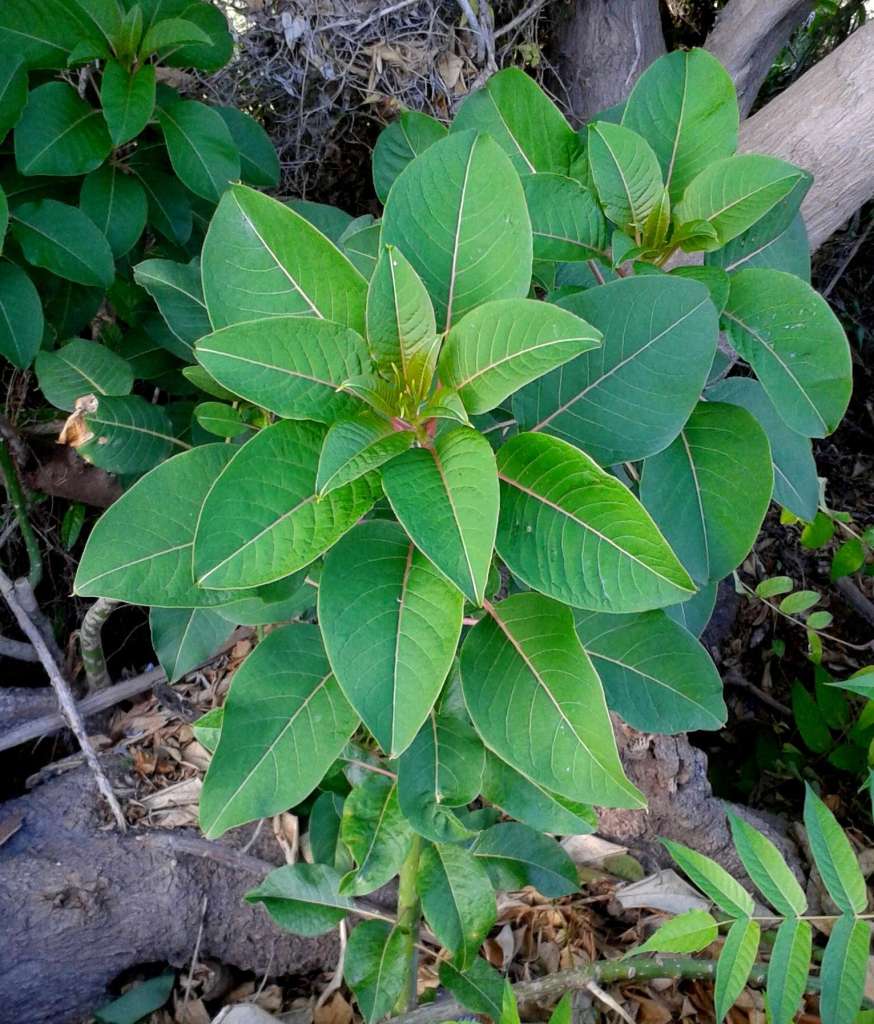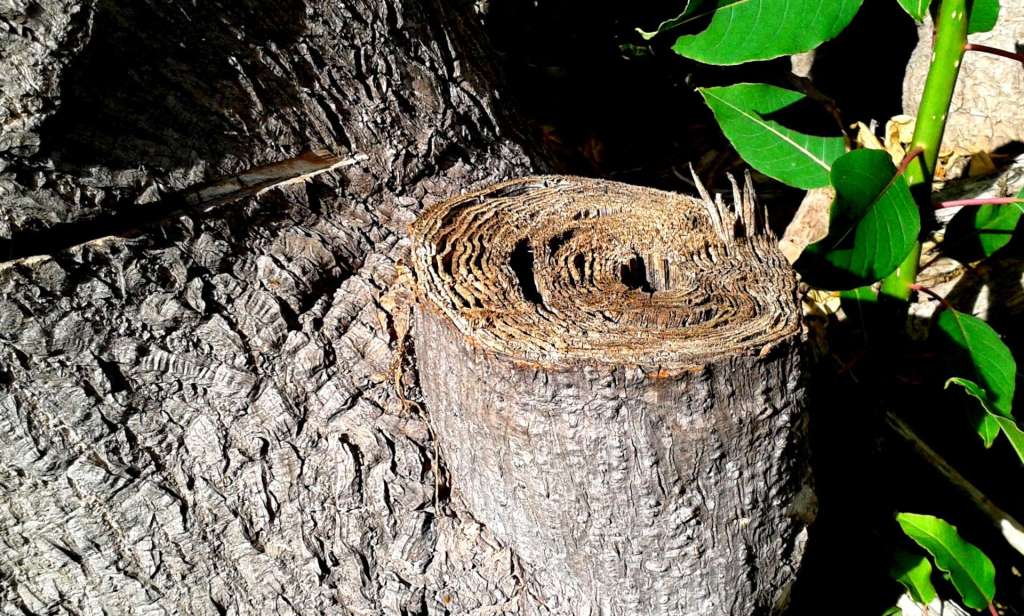
While on the island of Gozo I took notes of and enjoyed some of the trees unfamiliar to me. It is nice and interesting to find out what they are called and then to search on Google about their uses, growth, country of origin and so on, it keeps me quite busy at times. Then I will take many photos of all the different attributions, leaves, flowers, seeds, seed hulks, shoots, trunks etc. And of course I like to share this in my blog, my blog is after all a celebration of all that the earth so generously has to offer to us and to life itself. And so here goes, I hope you enjoy.
The Ombu tree, or to give it its proper name the Phytolacca dioica L. is an attractive tree. I found it growing in the area of Ghajnsielem along the main road. I was amazed to learn that this tree is actually an evergreen shrub that can become quite old and grow to look like a rather large tree. I became fascinated by the beautiful glossy dark green leaves, looking very healthy and growing very vigorously out of the trunk. Apparently the more you cut it, the more fiercely it grows. Its trunk is a soft spongy wood, the rings are loose and not at all like proper timber rings. It is resistant to fire and drought and this is due to its many trunks which store water very efficiently in its large base. Its sap is poisonous. The Ombu is a South American relative of the pokeweed (P. Americana) It is indigenous to Argentina, Brazil and Uruguay, there it grows easily in the wild, and it is there that it manages to survive on the pampas. Put to good use because of its large canopy it shelters both animals and humans alike, but is especially good for the many cattle and so it is of agricultural value.
Being a dioecious plant it produces male and female flowers on separate trees. The flowers are greenish white, little and many on one long spike. The fruit is green and is clustered in a bunch together, I see both flowers and fruits on the tree at this time (November). To date I have not myself seen the seeds but believe that they are brown, small and glossy. I shall be on the look out for them just to find out.
I learnt that extracts of the Ombu have Antifungal potencies which would probably make it interesting to Naturopaths or to pharmaceuticals.
Some of its uses are:
• Fodder – leaves are used as fodder in time of drought.
• Medicine – infusion of leaves has been used as a laxative, but don’t take my word for it please.
• Hot drink – locally the leaves may be used as a hot drink. (I am not planning to try it out myself not being sure of what the result will be).
• Soapy juice – containing salts of lime and potash.
• Shade in regions where other trees won’t grow – in the pampas it is the only tree that will naturally grow and provide shelter.
• Bonsais – something I did not know is that it is an ideal tree to grow as a bonsai, nice to know!
• Dyes – juice extracted from the berries can be used as a source of dyes.
• Berries – apparently the berries are eaten by birds as they are not affected by the toxin as the seeds contained within the berries passes through the bird intact.
I also read that in South Africa Ombu is treated as an invasive plant, possible because it grows so rapidly. Here in Gozo there is more and more emphasis on the growing of indigenous trees and plants, and eradicating to an extent the growth of invasive plants and trees. This is, of course, a tendency all over Europe these days. I am not sure at which time the Ombu tree was introduced in the Maltese islands and why, I wonder if it was introduced because of the high temperatures in the summer months, the drought some years, and the lack of tree cover in general.

I hope you enjoyed this little bit of information on the beautiful and interesting Ombu tree which in fact is not a tree at all. I for one will enjoy twice as much when I am passing these trees in the knowledge of all its good uses.
And finally what I would like to know but could not readily find an answer to is whether the water stored inside the Ombu tree’s large trunk can be used in case of water shortage by cattle or people, or is it already juice in which case it is toxic? I would say, it is juice and it is toxic so it cannot be used. If anyone can shed more light on this please do.







How interesting,love all the different flowers and trees 🌺🌲🌳🌵🌴🌸🕊😊🦉
LikeLiked by 1 person
Yes it is lovely to see the diversity in trees.
LikeLiked by 1 person
I never heard about this tree, dear Agnes and therefore it was really interesting to read all the information you found out. It’s always good to occupy with good things like this, dear Agnes. Have a great time, I really envy you to live in the South in this terrible grey weather we have here, kind regards Mitza
LikeLiked by 1 person
Thank you Mitza I am so glad that you enjoyed the information, I was delighted myself to find out about this tree/shrub as I also had not known it before. Have a peaceful wekend dear friend and I hope you get some nice sunshine.
LikeLiked by 1 person
Bedankt voor de duidelijke foto’s en zeer goede informatie.Heel interessante post.
LikeLiked by 1 person
Dank u wel, het is een boom die ik nog niet kende! Ja heel interessant.
LikeLike
The ombu tree sounds amazing. It would definitely be interesting to know whether the stored water could be useful for more than the tree itself.
LikeLiked by 1 person
I shall try and find out Helen, if you come across info about that you might let us know also 🙂
LikeLike
I will indeed, Agnes.
LikeLiked by 1 person
Reblogged this on agoyvaerts and commented:
I hope to re-blog some of my earlier posts, this one about a tree I got to know while we were staying on Gozo.
LikeLike
Thanks so much for sharing this, Agnes. What a fascinating tree and the post certainly underlines nature’s wondrousness.
LikeLiked by 1 person
Thank you Jean, yes a wonderful tree it is, most beautiful in all it forms.
LikeLiked by 1 person
A very interesting tree. Someday I hope to go to South America or Malta and see it.
LikeLiked by 1 person
I wish that for you too Julia!
LikeLiked by 1 person
Such a fascinating tree, thank you for writing so much about it. I am reading The Overstory by Richard Powers. It is a fascinating book about different trees.
LikeLiked by 1 person
Thank you Lakshmi, it is a lovely and very interesting tree indeed. I am glad you enjoyed reading my post and my photos. Thank you for the mention of the book by Richard Powers, I am definitely going to check that out. Great to hear from you.
LikeLike